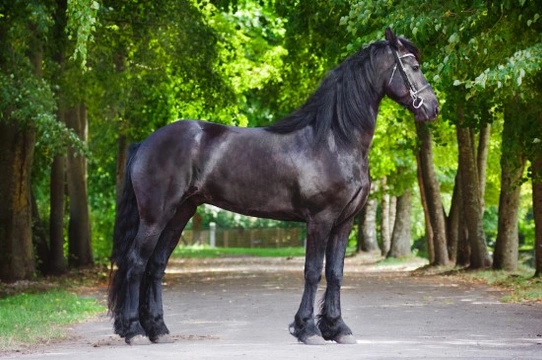
Breeds of Carriage Horse and Pony: A Complete 2025 Guide
For centuries, carriage horses and ponies have been essential for transporting passengers and Royalty, boasting a noble heritage. These breeds evolved to excel under harness, providing not only practical transportation but also elegance and strength for various carriage driving purposes. Whether you’re a novice driver or an admirer of driving teams, understanding the distinct breeds suited to harness work can help you select the perfect partner for your carriage activities.
Understanding Carriage Horse Breeds
Carriage horse breeds typically possess strength, grandeur, and a smooth, expressive gait perfect for pulling carriages. These horses often have calm temperaments, endurance, and an ability to perform in team settings.
Cleveland Bay
The Cleveland Bay is among the UK's oldest carriage breeds and has a prestigious presence in the Royal Mews, famously pulling Queen Elizabeth II's formal carriages. Despite being critically endangered according to the Rare Breeds Survival Trust, they remain visible in ceremonial roles. Characteristically bay with only a small white star allowed, Cleveland Bays are tall, with noble heads and a strong build, making them ideal for carriage driving and riding.
Friesian
Originating from the Netherlands, the Friesian horse is renowned for its striking black coat, long flowing mane, and feathered legs. They have a powerful build with an extravagant high-stepping trot prized in shows and ceremonial occasions. Friesians are versatile, equally comfortable under saddle or harness, and offer a charismatic presence for carriage driving enthusiasts.
Hackney
The Hackney is often considered the jewel of carriage horses, boasting a lightning-fast, exuberant trot with extremely high knee action. This breed was developed from fast action trotters in Yorkshire and Norfolk and has become primarily a show horse, thriving in the limelight. They are spirited yet manageable, great for drivers who appreciate energy in their driving partners.
Gelderland
The Gelderland, a Dutch breed, was specifically bred for harness work with a high knee action and an elegant long neck. Though currently in decline, they are still highly valued for combined driving competitions. They come in chestnut, bay, black, grey, and occasionally pinto. Traditional presentation includes teams matched by colour and height, often shown with white bridles.
Holstein
Originally developed as a powerful carriage horse in Germany, the Holstein was adapted with Thoroughbred blood to become more rideable yet retained its driving prowess. Teams of Holsteins have achieved success in high-level combined driving championships.
Nonius
The Nonius breed, started at the Imperial Stud in Hungary, is less well known outside its home country but has proven itself as a durable driving horse, capable of long distances due to its endurance rather than speed. Intelligent and easy-going, Nonius horses are excellent for those valuing a kind, trainable carriage partner.
Carriage Pony Breeds Suitable for Beginners and Enthusiasts
Ponies offer strength, agility, and a good temperament in a smaller package, ideal for children, amateurs, or those preferring smaller teams.
American Shetland
The American Shetland, derived from the Shetland pony, is more refined with expressive gaits reminiscent of the Hackney. Their small size suits light carriage work such as pulling gigs but not large coaches. They come in all colours and have fine coats, making them a popular choice in harness shows.
Fell Pony
Originating from the north of England, the Fell pony is robust and versatile, used historically for carrying produce and game and now as carriage ponies. The Royal family keeps several, with Prince Philip having driven them in competitive settings. They are renowned for their honesty, agility, and ability to navigate tight courses.
Fjord Pony
The Fjord pony from Norway is always dun with a distinctive brush-cut mane. With minimal crossbreeding, Fjords remain true to their hardy and versatile nature. Muscular and broad, they still serve in Norwegian mountains pulling carts and competing in combined driving.
Haflinger
The Haflinger is a chestnut pony with flaxen mane and tail, standing up to 15 hands. Combining athleticism with a smooth gait and gentle nature, they are popular for amateur drivers and are still used for light transportation in mountainous European regions.
Highland Pony
As the largest native UK pony breed, the Highland pony is adapted to Scotland's rugged terrain. They are resilient with dense winter coats and strong hooves rarely requiring shoes. Known for their gentle disposition and strength, they remain popular for small family carriages and pleasure driving.
How to Choose a Carriage Horse or Pony
- Consider Your Experience: Beginners often benefit from ponies like the Fell or American Shetland, while experienced drivers might prefer robust breeds like the Cleveland Bay or Friesian.
- Evaluate Intended Use: Large ceremonial coaches require strong breeds (e.g., Shire or Cleveland Bay). Leisure driving or combined driving competitions might suit Gelderland or Nonius breeds.
- Temperament and Trainability: Look for intelligent, kind, and trainable animals; Nonius and Haflinger are examples of good-natured breeds.
- Breed Conservation and Ethics: Support responsible breeders focusing on health and welfare, especially for rare breeds like the Cleveland Bay.
- Budget and Care: Larger horses require more maintenance and feeding, so consider ongoing costs.
Caring for Your Carriage Partner
Proper care and training are essential to maintain your horse or pony's wellbeing and performance. This includes a balanced diet, regular exercise, harness training, vet check-ups, and hoof care. Respectful handling and gradual training foster confidence and responsiveness in harness work.
Conclusion
Choosing the right carriage horse or pony involves understanding breed characteristics, your driving goals, and responsible ownership. Whether drawn to the elegance of a Friesian or the sturdy charm of a Fell pony, these breeds offer a rich heritage and wonderful partnership for carriage driving enthusiasts. Always seek reputable breeders and ensure the welfare of your equine companion throughout your journey.



